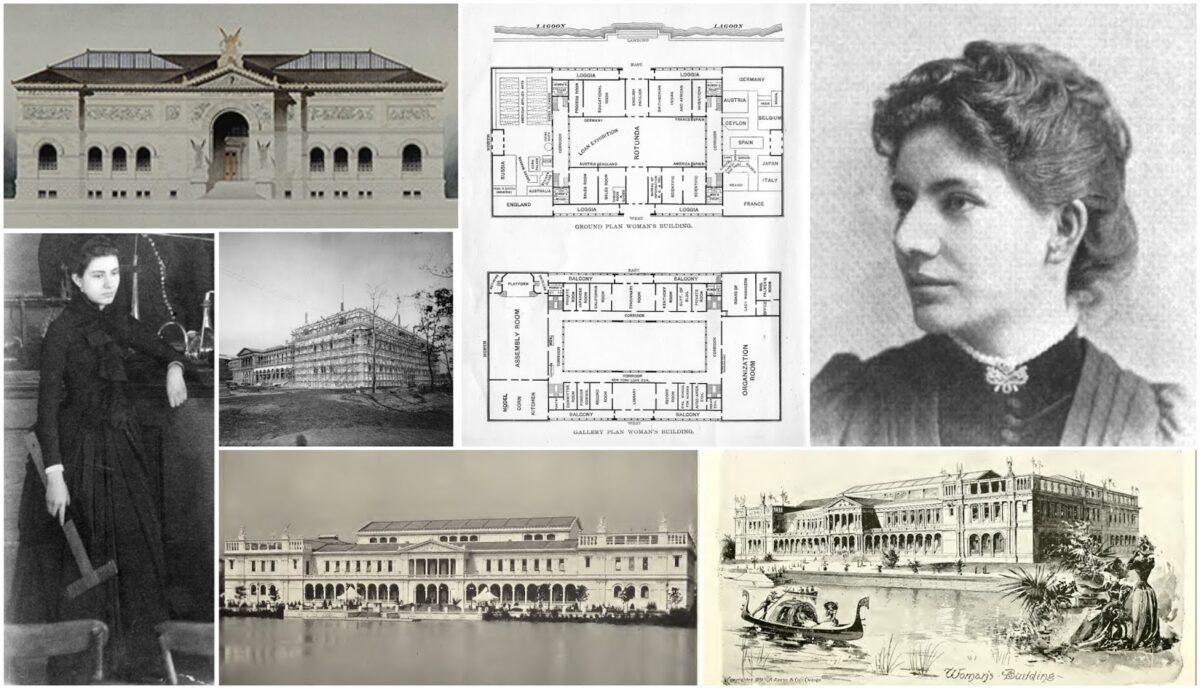As in any profession, women are taking their rightful place alongside
men in their field. They are finally being recognized for the creative,
talented professionals they are. This article will focus on the architect,
Sophia Gregoria Hayden. She was born on October 7, 1868, in Santiago,
Chile to a Peruvian mother and a father from the Northeastern United
State. She died on February 3, 1953, in Winthrop, Massachusetts, U.S.
In 1893, she fought for the aesthetic integrity of her design for the
Woman’s Building of the World’s Columbian Exposition in Chicago.
After a lifetime of designing, the Woman’s Building was Hayden’s only
project to ever be built!
She spent her early childhood in Chile and was educated in Boston,
where from age six she lived with her paternal grandparents. In 1886 she
became the first woman admitted to the architecture program of the
Massachusetts Institute of Technology in Cambridge, Massachusetts.
She was one of two women admitted into the program. The talented
determined Hayden completed the rigorous program in 4 years. Her
senior thesis was a design for a Fine Arts Museum of classic design. She
graduated with honors in 1890 but was unable to find work as an
architect. She finally took a job teaching mechanical drawing at the Eliot
school. The following year, Hayden entered a design competition for the
Woman’s Building of the World’s Columbian Exposition in Chicago.
Her design for a building styled after the Italian Renaissance won the
competition.
Hayden began working in 1891, often fending off the demands of the
Board of Lady Managers, who wanted to incorporate the work of other
woman artists (whether it complemented the structure’s overall design or
not). Upon completion of the building, Hayden received a fee of 3 to 10
times less than that of the male architects who designed Exposition
buildings. Although she was awarded a gold medal from the Board of
Lady Managers and male critics were patronizing. They remarked that her
structure had such “feminine” attributes as daintiness and grace.
Throughout her architectural career, which lasted only a few years and
resulted in only one realized building, Sophia Hayden Bennett played a
significant role in the profession at the moment when women were
beginning to practice in the United States. Hayden was the first woman
to receive a degree in architecture from MIT. As the architect of the
Woman’s Building at the 1893 World’s Columbian Exposition, Hayden
drew attention to the small group of female architects pursuing academic
training, and to the circumstances pursuing academic training they
would confront upon entering the profession.
On February 2, 1891, the Construction Department of the World’s
Columbian Exposition announced a competition for the design of the
Woman’s Building, one of the exhibition halls to be constructed for the
1893 international exposition in Chicago. The competition
advertisement specified that only designs by women would be eligible
and that each entrant must have formal training in architecture. The
author of the winning entry would be appointed as the architect of the
Woman’s Building and would receive an honorarium of $ 1,000.00 for
executing its working drawings. The creation of a Board of Lady
Managers were instituted to oversee the participation of women in
professional work. The Board was able to impose the requirement that
the Woman’s Building is designed by a female architect. This decision
was not without controversy. Louise Bethune, the most prominent and
experienced of contemporary female practitioners, refused to enter the
competition because the thousand-dollar honorarium was vastly less
than the commission being offered to male architects for other buildings
at the fair.
Sophia Hayden did choose to submit a design, along with twelve other
entrants. A jury judged Hayden’s design as the winner. Rectangular in plan,
two stories in height, the design suggested the same language as Italian
Renaissance classicism that Hayden had employed in her MIT thesis.
Only here there was less severity, and it was adapted for construction in
wood and staff rather than stone. Symmetrical wings flanked a central
portico, with interior rooms surrounding a central hall. The Woman’s
Building was one of the first fair buildings to enter construction,
during the summer of 1891. It was finished and ready for the opening of
the Exposition, within budget suggesting that Hayden had mastered the
managerial aspects of the profession as well as the artistic ones.
This first commission was also Hayden’s last realized building.
Although she was asked to design a Memorial Building that would
remain on the fair site as a permanent exhibition and may have prepared
initial plans, she did not complete any other architectural works. She
returned to New England and married interior designer William
Blackstone Bennett in 1900. They settled in Winthrop, Massachusetts. A
stepdaughter, Jennie May Bennett, was from William’s prior marriage.
The couple had no children of their own. Although Hayden designed a
memorial for women’s clubs in the U.S, in 1894, it was never built. She
worked as an artist for years and lived a quiet life. She died at the
Winthrop Convalescent Nursing home in 1953 of pneumonia after
suffering a stroke. William died of pneumonia in 1909.
What might American architecture, America’s cities, and American society
have looked like if Sophia Hayden had continued to design buildings?
Unfortunately, we will never know.


